
Exploring Naypyidaw: Myanmar's Modern Marvel
Discover Naypyidaw: Myanmar's modern capital, where expansive boulevards, impressive landmarks, and rich cultural heritage come together to create a unique travel experience.
Naypyidaw, the capital city of Myanmar, stands as a testament to modern urban planning and development. Officially designated as the capital in 2005, this city is a fascinating blend of sprawling landscapes, grandiose government buildings, and meticulously maintained parks. Unlike any other city in Myanmar, Naypyidaw provides a unique experience for travelers seeking to explore a city that is both new and rich in cultural significance. Visitors to Naypyidaw are often struck by its sheer size and the wide, empty boulevards that stretch through the city. The city's layout is designed for ease of travel, with distinct zones for government, hotels, and residential areas, making navigation straightforward. The impressive Uppatasanti Pagoda, a replica of the famous Shwedagon Pagoda in Yangon, stands as a central landmark and offers breathtaking views of the surrounding area. For those interested in wildlife, the Naypyidaw Safari Park and Zoological Gardens are must-visit attractions, showcasing a variety of native and exotic species. The city is also home to a number of pristine parks and gardens, including the stunning National Herbal Park, which features a vast collection of Myanmar's indigenous plants. Despite its modern infrastructure, Naypyidaw holds onto its cultural roots, with traditional markets and festivals offering a glimpse into the local way of life.
Local tips in Naypyidaw
- Rent a bike or car to explore the vast city easily.
- Visit the Uppatasanti Pagoda at sunset for stunning views.
- Check out the Water Fountain Garden for a relaxing evening.
- Visit the National Herbal Park to learn about local flora.
- Be prepared for the city's quiet and spacious atmosphere, quite different from bustling urban centers.
Exploring Naypyidaw: Myanmar's Modern Marvel
Naypyidaw, the capital city of Myanmar, stands as a testament to modern urban planning and development. Officially designated as the capital in 2005, this city is a fascinating blend of sprawling landscapes, grandiose government buildings, and meticulously maintained parks. Unlike any other city in Myanmar, Naypyidaw provides a unique experience for travelers seeking to explore a city that is both new and rich in cultural significance. Visitors to Naypyidaw are often struck by its sheer size and the wide, empty boulevards that stretch through the city. The city's layout is designed for ease of travel, with distinct zones for government, hotels, and residential areas, making navigation straightforward. The impressive Uppatasanti Pagoda, a replica of the famous Shwedagon Pagoda in Yangon, stands as a central landmark and offers breathtaking views of the surrounding area. For those interested in wildlife, the Naypyidaw Safari Park and Zoological Gardens are must-visit attractions, showcasing a variety of native and exotic species. The city is also home to a number of pristine parks and gardens, including the stunning National Herbal Park, which features a vast collection of Myanmar's indigenous plants. Despite its modern infrastructure, Naypyidaw holds onto its cultural roots, with traditional markets and festivals offering a glimpse into the local way of life.
When is the best time to go to Naypyidaw?
Iconic landmarks you can’t miss
Thapyaygone Market
Experience the heart of Naypyidaw at Thapyaygone Market, where local culture, delicious food, and unique crafts come together in a vibrant atmosphere.

Junction Nay Pyi Taw
Explore Junction Nay Pyi Taw, a vibrant shopping destination blending local culture and modern retail experiences in Myanmar's capital.
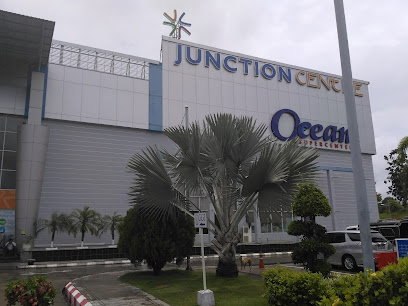
Uppatasanti Pagoda
Discover the awe-inspiring Uppatasanti Pagoda, a symbol of peace and architectural beauty in Naypyidaw, Myanmar.

Naypyitaw Water Fountain Park
Experience the magic of Naypyitaw Water Fountain Park, where stunning water displays and lush gardens create an enchanting escape in Myanmar's capital.

PARKROYAL Nay Pyi Taw
Experience unparalleled luxury and comfort at PARKROYAL Nay Pyi Taw, your perfect base for exploring Myanmar's capital, rich in culture and history.

Hilton Nay Pyi Taw
Discover the epitome of luxury and comfort at Hilton Nay Pyi Taw, the premier hotel destination in Myanmar's capital city.

MyoMa Market (Naypyitaw) မြို့မဈေး(နေပြည်တော်)
Experience the essence of Myanmar at MyoMa Market in Naypyidaw, where vibrant local culture, delicious food, and unique crafts await.

MICC 2 Myanmar International Convention Center
Explore the Myanmar International Convention Center, a modern hub of culture and innovation in Naypyidaw, showcasing the best of Myanmar's hospitality.

Kempinski Hotel Nay Pyi Taw
Experience unparalleled luxury and comfort at Kempinski Hotel Nay Pyi Taw, Myanmar's premier five-star destination for discerning travelers.

Naypyidaw City Development Committee Guest House
Discover comfort and convenience at the Naypyidaw City Development Committee Guest House, the perfect base for exploring Myanmar's capital.

Maravijaya Buddha Statue
Discover the breathtaking Maravijaya Buddha Statue in Naypyidaw, a symbol of peace and a masterpiece of Buddhist art in Myanmar.
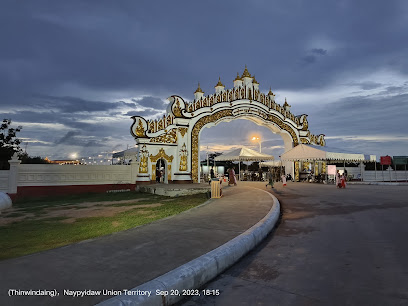
Myanmar Gems Museum
Explore the captivating world of gemstones at Myanmar Gems Museum, showcasing the rich heritage and stunning beauty of Myanmar's natural treasures.

Hotel Myat Taw Win
Experience comfort and tranquility at Hotel Myat Taw Win in Naypyidaw, the heart of Myanmar's impressive capital city.

National Herbal Park
Discover the lush beauty and educational wonders of the National Herbal Park in Naypyidaw, where nature and culture intertwine.

Rose Shape Roundabout
Discover the enchanting beauty of the Rose Shape Roundabout, a floral-inspired cycling haven in Oo Yin Su Ward, Myanmar.

Unmissable attractions to see
Myanmar Gems Museum
Explore the captivating world of gemstones at Myanmar Gems Museum in Naypyidaw, where beauty meets culture and history.

National Landmark Garden
Explore the serene beauty of the National Landmark Garden in Zeyar Thiri, a perfect escape for nature lovers and tranquil seekers alike.

National Museum of Myanmar (Naypyidaw)
Explore the National Museum of Myanmar in Naypyidaw, where history and culture come alive through captivating exhibits and artifacts.

Pagoda Lake
Discover the tranquil beauty of Pagoda Lake in Lewe, Myanmar, a serene destination perfect for unwinding and exploring rich cultural heritage.

မင်္ဂလာသိဒ္ဓိ lake view
Discover the tranquility of Lake View in Naypyidaw, a picturesque attraction perfect for relaxation and nature appreciation.

Sealopmea
Explore the natural beauty and tranquility of Sealopmea, a hidden tourist attraction in Naypyidaw that offers a peaceful retreat into nature.

Essential places to dine
YKKO Kyay-Oh
Experience authentic Myanmar cuisine at YKKO Kyay-Oh in Naypyidaw—where every dish tells a story!

Sein Mie Mie
Experience authentic Burmese flavors at Sein Mie Mie, a top-rated restaurant in Naypyidaw offering delicious dishes in a welcoming atmosphere.

NPT-Shwe Yin Chun
Experience authentic Burmese flavors at NPT-Shwe Yin Chun in Naypyidaw's lively Thapyaygone Market.

Satori Japanese Restaurant Naypyitaw
Discover authentic Japanese flavors at Satori Japanese Restaurant in Naypyidaw - where every meal is a delightful experience.

Mon Ma2 Mon Traditional Restaurant
Discover the rich flavors of Myanmar at Mon Ma2 Mon Traditional Restaurant in Naypyidaw—where authentic cuisine meets warm hospitality.

Sin Phyu Taw
Discover authentic Myanmar cuisine at Sin Phyu Taw in Naypyidaw – where every dish tells a story.
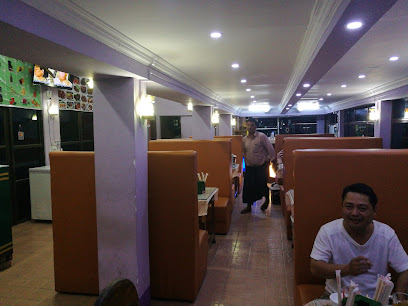
Café Lake view
Experience exquisite European cuisine at Café Lake View in Naypyidaw – where stunning lakeside views meet delightful flavors.

Shwe Muse Restaurant
Experience authentic Burmese cuisine at Shwe Muse Restaurant in Naypyidaw – where flavor meets tradition in every dish.

ဓနုဖြူဒေါ်စောရီ
Explore authentic Burmese cuisine at ဓနုဖြူဒေါ်စောရီ in Naypyidaw - a culinary treasure reflecting Myanmar's rich flavors.

Bamboo Land
Experience authentic Kachin cuisine at Bamboo Land in Naypyidaw – where flavor meets tradition in a welcoming setting.

Sakura Japanese Restaurant & Sushi
Discover authentic Japanese flavors at Sakura Japanese Restaurant & Sushi in Naypyidaw – where culinary art meets tradition.

Miss India ( ချစ်တီးမလေး )
Savor authentic Indian flavors at Miss India in Naypyidaw - where every dish tells a story.

Burbrit Craft Beer Taproom @ Naypyitaw
Discover Naypyitaw's craft beer scene at Burbrit Taproom – where local flavors meet exceptional brews in a cozy atmosphere.

မောင် မြန်မာ့ရိုးရာထမင်းဆိုင်
Discover the essence of traditional Burmese cuisine at မောင် မြန်မာ့ရိုးရာထမင်းဆိုင် in Naypyidaw - where every dish tells a story.

Kitchen For NayPyiTaw
Experience authentic Burmese cuisine at Kitchen For NayPyiTaw, where every dish tells a story of tradition and flavor.

Markets, malls and hidden boutiques
Myoma Market HIghway car Accessories Shop
Explore Myoma Market in Naypyidaw for the best selection of car accessories and local automotive treasures.

Waddi Htet
Explore the latest fashion trends at Waddi Htet, a premier clothing store in Naypyidaw offering unique styles and exceptional service.

Shwe Ta Khine
Explore the exquisite fashion of Myanmar at Shwe Ta Khine, Naypyidaw's premier women's clothing store offering unique and stylish designs.

Ma Ei Surprise Gift
Explore Ma Ei Surprise Gift in Naypyidaw for authentic Myanmar handicrafts and unique souvenirs that capture the essence of local culture.
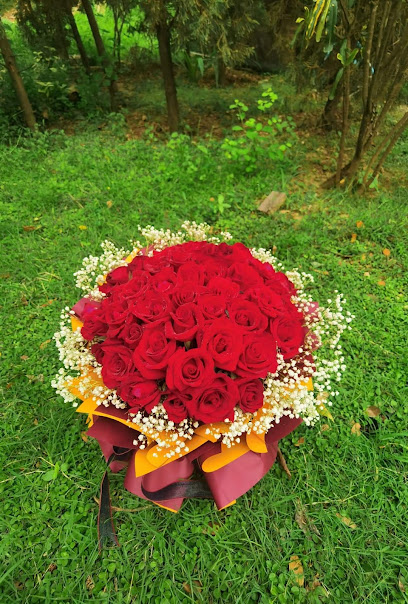
Thant Zin Oo. Jade Store.
Explore the exquisite craftsmanship of Myanmar jade at Thant Zin Oo Jade Store, your destination for authentic jewelry in Naypyidaw.

ခိုင္ ဧ ေက်ာ္ အထည္ အလိတ္
Discover the charm of Khaing Aye Kyaw Store in Naypyidaw's Myoma Market, where local artistry meets vibrant shopping culture.
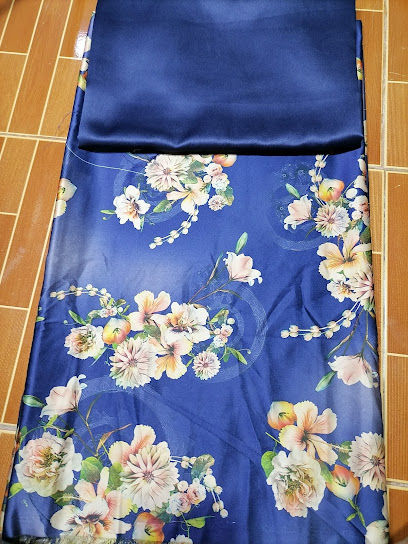
အောင်သစ္စာ ပဲဆီသန့်
Explore unique local products and immerse yourself in Burmese culture at the charming store, အောင်သစ္စာ ပဲဆီသန့် in Naypyidaw.

SUPER ONE DEPARTMENT STORE JUNCTION NAY PYI TAW
Explore Super One Department Store in Nay Py Taw for an unforgettable shopping adventure with a blend of local and international products.

Snowy Collection -4
Explore Snowy Collection -4, a vibrant cosmetics store in Naypyidaw's Myoma market, offering a wide range of beauty products for all your needs.

Palae Phyu Sweater ပုလဲဖြူဆွယ်တာ နေပြည်တော်
Discover traditional craftsmanship at Palae Phyu Sweater, where unique designs meet the heart of Naypyitaw's vibrant MyoMa Market.

မယ်မဒီကွန်ပျူတာပန်းထိုးနှင့်ဌာနနဆိုင်ရာရုံးယူနီဖောင်းမျိုးစုံ လက်လီလက်ကားအထည်ဆိုင်
Explore unique fashion at Naypyidaw's premier clothing store, where modern styles meet traditional Myanmar attire in a vibrant shopping experience.

ဇာမဏီ စတိုး
Immerse yourself in local culture at ဇာမဏီ စတိုး, a unique shopping destination in Naypyidaw offering traditional and modern products.

FOR U Branded Collections
Explore diverse fashion options at FOR U Branded Collections in Naypyidaw's lively Thapyaygone Market, perfect for every traveler’s wardrobe.

အေးမေတ္တာစတိုး
Explore Aye Meitta Store in Naypyidaw for unique clothing and accessories reflecting Myanmar's vibrant culture and style.

NPT Haymar Collection
Explore NPT Haymar Collection in Naypyidaw for unique clothing that combines traditional craftsmanship with modern fashion trends.

Essential bars & hidden hideouts
The Fox Bar & Restaurant
Discover the vibrant atmosphere and delicious cuisine at The Fox Bar & Restaurant, a top dining destination in Naypyidaw for travelers.

Royal Mahasan Bar & Restaurant
Experience the essence of Myanmar's culinary delights at Royal Mahasan Bar & Restaurant, a must-visit dining destination in Naypyidaw.

Excellent Music Bar and Restaurant
Discover the rhythm of Naypyidaw at the Excellent Music Bar and Restaurant, where music meets delicious cuisine in a vibrant atmosphere.
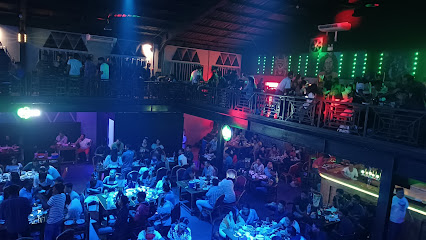
Krabi Bar & Restaurant
Discover the lively charm of Krabi Bar & Restaurant in Naypyidaw, where vibrant nightlife meets a welcoming atmosphere.

360 Delight Sky Lounge and Twilight Entertainment
Discover the stunning views and vibrant atmosphere at 360 Delight Sky Lounge, Naypyidaw's premier destination for relaxation and entertainment.

Leo Cafe & Bar
Experience the lively ambiance of Leo Cafe & Bar in Naypyidaw, where delightful drinks and a vibrant atmosphere await every visitor.

မြို့မဈေးစားသောက်ဆိုင်တန်း
Explore Naypyidaw's lively bar scene, where local flavors and vibrant nightlife create an unforgettable experience in Myanmar's capital.

Padauk Bar & Restaurant - ပိတောက်
Discover the vibrant Padauk Bar & Restaurant in Naypyidaw, offering a delightful atmosphere and an extensive drink menu for the perfect night out.

ရေပန်းဉယာဉ်
Discover the lively atmosphere and diverse drink selection at ရေပန်းဉယာဉ် in Naypyidaw, a perfect spot to unwind and socialize.

Sky One Music Entertainment
Experience the vibrant nightlife of Naypyidaw at Sky One Music Entertainment, featuring great drinks, live music, and a lively atmosphere.
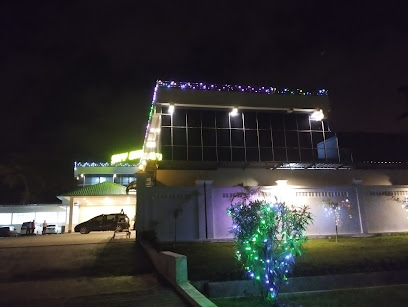
STG bar
Experience the lively atmosphere and delightful drinks at STG Bar, the premier nightlife destination in Naypyidaw, Myanmar.

Relax Music Bar
Discover the perfect retreat at Relax Music Bar, where soothing sounds and refreshing drinks create an unforgettable experience in Naypyidaw.

The Moon Restaurant & Bar
Experience the vibrant culinary scene at The Moon Restaurant & Bar in Naypyidaw, where exquisite flavors and a lively atmosphere await.

Carnival Bar
Discover the vibrant atmosphere of Carnival Bar in Naypyidaw, a perfect retreat for relaxation and socializing with drinks and lively decor.

Colourful Bar & Restaurant
Discover the vibrant nightlife at Colourful Bar & Restaurant in Naypyidaw, where delicious cuisine meets a lively atmosphere.

Local Phrases
-
- Helloမင်္ဂလာပါ
[mingalabar] - Goodbyeသွားမို့
[swamoe] - Yesဟုတ်ကဲ
[hote kae] - Noမဟုတ်ဘူး
[ma hote bu] - Please/You're welcomeကျေးဇူးတင်ပါ
[chit su tin par] - Thank youကျေးဇူးတင်ပါ
[chit su tin par] - Excuse me/Sorryကျေးဇူးတင်ပါ
[chit su tin par] - How are you?ဘယ်လို့ယားလဲ
[ba lei ya lar] - Fine. And you?အိမ့် နင့်တဲ့လဲ
[ain nang te lar] - Do you speak English?အင်္ဂလိပ်လဲ
[ingale pyi lar] - I don't understandသိမ်းမကူ
[sa mya ku]
- Helloမင်္ဂလာပါ
-
- I'd like to see the menu, pleaseရမ်း စားလို့မယ်
[ya ma soe mar] - I don't eat meatမြောက်မယ်လဲ
[yauk ma lar] - Cheers!ခင်ဗျားမို့
[khan pyar moe] - I would like to pay, pleaseငွေလေးနင့်မယ်
[win lein nang te lar]
- I'd like to see the menu, pleaseရမ်း စားလို့မယ်
-
- Help!ကူခဲ့
[ku hke] - Go away!ခင်ဗျားမို့
[khan pyar moe] - Call the Police!ရောက်ရင့်ပါ
[yauk yin par] - Call a doctor!အဆင့် ရောက်ရင့်ပါ
[a shin yauk yin par] - I'm lostခြောက်ပြီးလဲ
[kauk pyi lar] - I'm illနာမည်လဲ
[na ma lar]
- Help!ကူခဲ့
-
- I'd like to buy...ဝယ်ချင်တယ်
[yay chin te] - I'm just lookingကြည့်ရှုနဲ့လဲ
[kyin shwe ne lar] - How much is it?ဘယ်လို့ငွေလဲ
[ba lei win lar] - That's too expensiveဤလိုင်းမှာ အရောင်းလဲ
[it loon ma har lar] - Can you lower the price?စျေးခြင်းလဲမယ်
[seit kying lar ma]
- I'd like to buy...ဝယ်ချင်တယ်
-
- What time is it?ဘယ်နာရီလဲ
[ba na re lar] - It's one o'clockတစ်နာရီလဲ
[ta na re lar] - Half past (10)ဆန်းချိုင်လဲ (ဆယ်)
[hsan chauk lar (hsay)] - Morningနန်းကန်ကွန်း
[nan kan kwan] - Afternoonမနက်ကွန်း
[man kan kwan] - Eveningညနေကွန်း
[nya ne kan kwan] - Yesterdayမနေ့လဲ
[mane lar] - Todayယနေ့
[ya ne lar] - Tomorrowမနက်
[man kan] - 1တစ်
[ta] - 2နှစ်
[hne] - 3သုံး
[saun] - 4လေး
[lei] - 5ငါး
[nga] - 6ခြောက်
[kauk] - 7ခွေး
[khwai] - 8ဟုတ်
[hote] - 9ကိ
[ki] - 10ဆယ်
[hsay]
- What time is it?ဘယ်နာရီလဲ
-
- Where's a/the...?ဘာလိုင်းမှာလဲ
[ba loon ma har lar] - What's the address?လိပ်စာလို့လဲ
[leisa loe lar] - Can you show me (on the map)?မင်းဖိုင်နဲ့ပြောင်လဲမယ်
[ning buin ne pyaw ng lar ma] - When's the next (bus)?နောက်လှန်းနဲ့လဲ
[na kan lan ne lar] - A ticket (to ....)လက်မှတ်မယ်
[la mat ma lar]
- Where's a/the...?ဘာလိုင်းမှာလဲ
History of Naypyidaw
-
Naypyidaw, meaning 'Abode of Kings,' was officially unveiled as the new capital of Myanmar on November 6, 2005. The government announced the move from Yangon unexpectedly, marking a significant moment in the country's history. The relocation aimed to position the administrative center in a more strategic and centrally located area of Myanmar.
-
The construction of Naypyidaw began in secret in 2002. Massive manpower and resources were directed to develop the city, which spans approximately 7,054 square kilometers. The city is known for its vast and meticulously planned infrastructure, including wide boulevards, government complexes, residential zones, and a fully operational airport.
-
The choice of November 6, 2005, for the capital's inauguration is steeped in astrological significance. Myanmar's military government consulted astrologers to determine an auspicious date and time for the move, reflecting the deep cultural importance of astrology in Burmese society.
-
Naypyidaw's establishment was seen as a move by the military junta to consolidate power and ensure greater security. Being centrally located and away from the coastal threats, the city was designed to be more defensible. The move also symbolized a new era of governance and control in Myanmar's political landscape.
-
Naypyidaw has been designed to incorporate Myanmar's diverse cultural heritage. The city features numerous parks, religious monuments, and cultural centers. The Uppatasanti Pagoda, a prominent landmark in Naypyidaw, is a replica of Yangon’s famous Shwedagon Pagoda and serves as a symbol of spiritual continuity.
-
Naypyidaw has rapidly developed into an economic hub with modern amenities and facilities. The city hosts several significant events, including the 24th ASEAN Summit in 2014. Despite its relatively recent establishment, Naypyidaw is equipped with state-of-the-art conference centers, hotels, and shopping complexes.
-
The city is surrounded by lush greenery and is home to several parks and gardens, including the Naypyidaw Zoological Gardens and the National Herbal Park. These attractions highlight Myanmar's rich biodiversity and commitment to environmental conservation.
-
Naypyidaw boasts an extensive transportation network, including the Naypyidaw Airport, a railway station, and well-designed road systems. The city's layout allows for efficient travel and connectivity, reflecting the planners' vision for a modern capital.
-
As Myanmar continues to develop, Naypyidaw is poised to play a crucial role in the country's future. Its strategic location, modern infrastructure, and cultural significance make it a focal point for national progress and international engagement.
Naypyidaw Essentials
-
Naypyidaw, the capital city of Myanmar (Burma), is accessible primarily by air, road, and rail. The Naypyidaw International Airport (NYT) serves domestic flights and limited international connections. Most travelers arrive via Yangon or Mandalay, with domestic flights available from these major cities. By road, Naypyidaw is connected through the Yangon-Mandalay Expressway, and buses or private cars are common modes of transport. The city is also reachable by train with services from Yangon, Mandalay, and other cities, although train travel can be slower and less reliable.
-
Naypyidaw is known for its wide and well-maintained roads. Taxis are readily available and are the most convenient way to get around. Motorbike taxis and private car hires are also options. For public transport, the city has a bus service, though it might not cover all tourist destinations. Renting a bicycle or motorbike can be a good way to explore the city at your own pace. Be aware that the city is quite spread out, so plan your trips accordingly.
-
The official currency in Myanmar is the Kyat (MMK). While major hotels and some restaurants accept credit cards, it's advisable to carry cash for smaller establishments, local markets, and transportation. ATMs are available in Naypyidaw, but it’s wise to have enough cash on hand, especially when venturing out of the city center. Currency exchange services are available at airports, banks, and authorized exchange counters.
-
Naypyidaw is generally considered safe for tourists, with a low crime rate compared to other cities in Myanmar. However, standard precautions should still be taken. Avoid walking alone at night in isolated areas and always keep an eye on your belongings in crowded places. There are no specific neighborhoods known for high crime rates targeting tourists, but it’s always best to stay vigilant and aware of your surroundings.
-
In case of emergency, dial 199 for police, 192 for fire, and 193 for medical emergencies. Naypyidaw has modern medical facilities, including hospitals and clinics. It’s recommended to have travel insurance that covers medical emergencies. Pharmacies are available for minor health issues, offering over-the-counter medications. Keep a list of emergency contacts, including your embassy or consulate, and familiarize yourself with the locations of the nearest hospitals and police stations.
-
Fashion: Do dress modestly, especially when visiting religious sites. Avoid wearing revealing clothing. Religion: Do show respect for local customs. Remove your shoes and cover your shoulders and knees when entering pagodas and temples. Public Transport: Do be courteous and give up your seat to elderly passengers. Don't eat or drink on public transport. Greetings: Do greet people with a nod or a slight bow. A handshake can be used but be gentle. Eating & Drinking: Do try local dishes and eat with your right hand if dining in a traditional setting. Don’t refuse food offerings as it is considered impolite.
-
To experience Naypyidaw like a local, visit the Myoma Market for fresh produce and local goods. Engage with locals, as they are often friendly and willing to share stories about their city. Don’t miss a visit to the Uppatasanti Pagoda, a replica of Yangon’s Shwedagon Pagoda, and the National Herbal Park to see a variety of medicinal plants. For a unique experience, explore the Water Fountain Garden, especially in the evening when the fountains are illuminated.
Trending Landmark in Naypyidaw
-
Thapyaygone Market
-
Junction Nay Pyi Taw
-
Uppatasanti Pagoda
-
Naypyitaw Water Fountain Park
-
PARKROYAL Nay Pyi Taw
-
Hilton Nay Pyi Taw
-
MyoMa Market (Naypyitaw) မြို့မဈေး(နေပြည်တော်)
-
MICC 2 Myanmar International Convention Center
-
Kempinski Hotel Nay Pyi Taw
-
Naypyidaw City Development Committee Guest House
-
Maravijaya Buddha Statue
-
Myanmar Gems Museum
-
Hotel Myat Taw Win
-
National Herbal Park
-
Rose Shape Roundabout
Nearby Cities to Naypyidaw
-
Things To Do in Kalaw
-
Things To Do in Inle Lake
-
Things To Do in Pyay
-
Things To Do in Bagan
-
Things To Do in Mae Hong Son
-
Things To Do in Ngapali
-
Things To Do in Mandalay
-
Things To Do in Pai
-
Things To Do in Pyin Oo Lwin
-
Things To Do in Kyaiktiyo
-
Things To Do in Mrauk U
-
Things To Do in Chiang Mai
-
Things To Do in Yangon
-
Things To Do in Sittwe
-
Things To Do in Hpa-An













